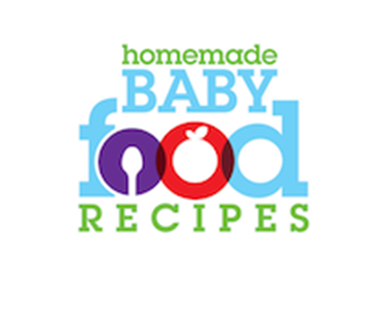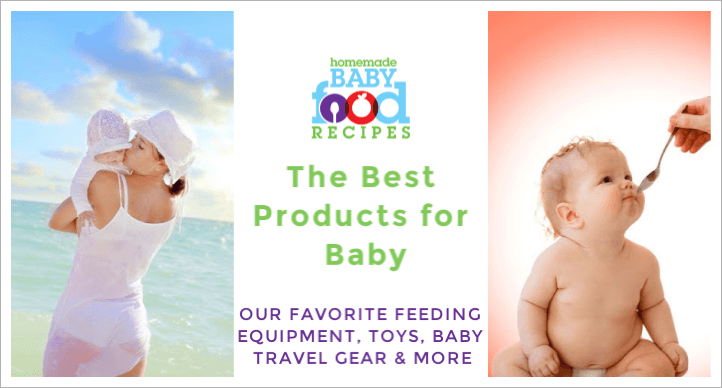Homemade Yogurt – A Simple and Delicious Food for Your Baby
Updated: Nov 10, 2023
Homemade yogurt is so simple to prepare that you may never use the store-bought version again!
Here you’ll learn how to make yogurt for your baby – and for the whole family – to enjoy…
When can my baby eat yogurt?
As with all new foods, you should speak to your doctor before including yogurt in your baby’s diet.
In general, babies can be introduced to yogurt from 6 months of age, but there are certain situations when it may be better to wait until after your baby’s first birthday (please see our page about Introducing Dairy for more information).
Yogurts are considered to be one of the ‘safer’ dairy products to introduce to your baby.
This is because the allergenic protein in milk is broken down during the fermenting process, making it easier to digest and less likely to cause an allergic reaction or other negative response.
Yogurt may, therefore, better tolerated by individuals with lactose intolerance and milk allergy than most other dairy products (see AAP RECOMMENDS LACTOSE INTOLERANT CHILDREN CONSUME SOME DAIRY PRODUCTS).
Homemade soy yogurt
If your baby is allergic to milk, then please check out this post on our blog, which explains how to adapt the recipe shown here to create homemade soy yogurt!
The benefits of yogurt for my baby
Handy tip
If your baby has had a nasty bout of diarrhea, yogurt can be a great way to replenish his gut with ‘friendly’ bacteria.
Packed with gut-friendly bacteria, yogurt is an excellent aid to digestion and – in the long term – helps guard against colon cancer.
Yogurt is also an excellent source of calcium for your baby – the ‘live’ bacteria it contains actually help your baby’s body absorb the calcium very efficiently.
This means that, ounce for ounce, your baby receives more calcium from yogurt than from milk.
The same applies to the protein in yogurt, which is easily digested thanks to the fermentation process that breaks it down.
Is homemade yogurt worth the trouble?
Absolutely – and that’s because it’s so incredibly simple to make!
And that’s not all – the taste is superior to that of commercially made yogurt (after all, it’s as fresh as can be!) and you know JUST what it contains!
It’s very easy to prepare homemade yogurt in large batches, so you can keep the whole family supplied with very little effort and cost – we can’t think of a good reason NOT to make your own yogurt!
The basics of making yogurt at home
In a nutshell, yogurt is made by fermenting milk with ‘friendly’ bacteria.
When you introduce the ‘friendly’ bacteria to the milk, they feed on the milk sugar (lactose).
The milk then thickens and lactic acid is produced.
This is responsible for the somewhat tart flavour of yogurt and also keeps the milk from spoiling – leaving you with a product that’s both nutritious and safe.
The ‘starter’ for your homemade yogurt
So how do you introduce ‘friendly’ bacteria into milk?
Well, you need a yogurt starter!
Commercial starters are available from natural and health food stores – and also online from Amazon – but another option is to use a small amount of a store-bought natural, unflavoured yogurt.PLEASE NOTE: If you choose to use a commercial starter, please read the instructions on the pack as the temperatures required may differ from those shown here.
When buying a commercially prepared yogurt to use as a ‘starter’, you should…
- Check the label carefully – your starter needs to contain active cultures (also known as ‘live’ bacteria).
- Try to avoid yogurt that has almost reached its ‘Use By’ date. A fresher starter gives a better result.
Once you’ve made your first batch of homemade yogurt, you can use some of it as the starter for your next batch.
You may find that, by around your fifth batch, your results aren’t as good – if this is the case, just buy a new tub of natural yogurt to start the process again!
The seven easy steps to perfect homemade yogurt
Step 1
Assemble your ‘yogurt making’ equipment – which is actually far more basic than you’d expect!
Yes, you can buy a yogurt maker – and yes, it may make things a little easier.
But it’s by no means essential – we regularly prepare our own yogurt and have NEVER used one!
Here’s what you’ll need…
- 32 fl oz (equivalent to 1 quart or 1 litre) whole milk. Your baby needs fats in his diet, so using whole milk when making his yogurt is important. For other family members, you may prefer to use a reduced fat variety.
- 2 tbsp natural, unflavoured yogurt. Take the yogurt out of the refrigerator about 15-30 mins before you start, so that it’s as near as possible to room temperature when you add it to the milk.
- A large pot with a lid.
- A food thermometer (it needs to include temperatures from 110 to 180 deg F – a candy or sugar thermometer is perfect).
- A large spoon.
Please note that the quantities of milk and yogurt shown here are just to illustrate the proportions you’ll need.
You can double or even treble the quantities if you wish.
Can You Make Yogurt With Breast Milk?
Yes you can – but you may need to adapt the preparation just a little!
Step 2
Fill the pot with water, boil for a few minutes, then add the spoon and thermometer.
This sterilizes your equipment and ensures a better end result.
Step 3
Empty the pot, then pour in the milk.
Gently warm it to a temperature of 185 deg F, to kill any ‘bad’ bacteria it may contain (these can have an adverse effect on the finished product).
Watch the pot closely and be careful not to burn the milk!
Step 4
Remove the pot from the heat and set aside.
You need to cool the milk to between 110 and 115 deg F, because these are the temperatures between which the live bacteria will efficiently ferment the milk.
It is possible to speed up this step by sitting the pot in a larger pot full of ice.
But – unless you’re willing to stir the pot every minute or two to ensure even cooling – we wouldn’t recommend this and find it easier to allow the milk to cool by itself.
Step 5
Thoroughly stir the yogurt into the milk, then immediately place the lid on the pot.
Move the pot at once to a warm place, where you can leave it – undisturbed – for a minimum of six hours.
There are two important rules to obey at this point to guarantee a good yogurt
- Keep the pot at a constant temperature of between 110 and 115 deg F. The live bacteria will become inactive at lower or higher temperatures.
- Don’t move the pot at all, or stir the fermenting milk. This slows down the process and you may be disappointed with your results at the end of the waiting time!
How to keep the pot at a consistent temperature…
Most ovens do not have a low enough heat setting for producing yogurt, so here are a few other methods to try:
- Sit the pot in an oven warmed by the pilot light alone – our pilot light burns fiercely, so this works well for us!
- Sit the pot on an electric warming pad (like the ones you use for back pain). You may need to experiment a little with the heat settings!
- Wrap the pot in a very thick blanket – if this isn’t warm enough, sit the wrapped pot in a cooler for extra insulation.
- Put the pot in the airing cupboard/boiler closet.
Readers' Pics

I find it tricky to use a thermometer, but otherwise it was very pleasant.
I made the yogurt in the vanilla flavor.
I didn’t want to add purees, in case my son would not like it.
He loved it! See for yourself!
Manon Bradshaw – Frisco, Texas, USA
Step 6
After a minimum of 6 hours, take a look at your yogurt.
The longer you leave the yogurt, the thicker it will become (and the more ‘tangy’ it will taste!).
We actually find 7 hours to be the perfect length of time.
Now – you may find that the yogurt doesn’t look quite the way you were expecting it to!
It will probably have a ‘layer’ of liquid on top of milk curds – and the liquid may even look a little yellow.
Don’t worry – this is totally normal!
Just mix the curds and the liquid together (although it’s OK to spoon the liquid off if you prefer!).
The yogurt will be thinner in consistency than store-bought yogurts – but that’s because they tend to contain additional thickeners and YOUR yogurt is 100% natural!
Remember – you can make it a little thicker next time by allowing it to ferment for longer.
Step 7
Pour your homemade yogurt into suitable containers with lids, then refrigerate.
Refrigeration actually stops the bacteria in the yogurt from creating any more lactic acid – that’s why the yogurt doesn’t ferment and thicken any further.
You can store it for up to a week in the refrigerator.
Voila! Your homemade yogurt is ready… wasn’t that easy?
Now you’ve seen how quickly you can produce large batches of healthy and delicious homemade yogurt, here are some ways in which you can serve it to your baby…
- Combine homemade yogurt with your baby’s favourite fruit purees – opt for sweeter fruits that will work well with the tartness of the yogurt.
(DON”T sweeten it with honey until your baby is at least a year old, as honey may contain the spores that cause botulism). - Offer yogurt to your baby as a yummy dip, with either fruit or veggie sticks.
- Stir in a little vanilla essence and serve the yogurt alone, or with a nutritious wheat germ topping.
- Use your homemade yogurt when baking, as a replacement in recipes calling for sour cream.
- Combine the yogurt with fresh fruit juice, then freeze in lolly (popsicle) moulds for a refreshing treat – or to soothe the gums of teething tots!
- Make some delicious homemade yogurt cheese, which you can use as a spread or a dip for baby
Readers' Pics

“I use my spoon when it is something good!”
The yogurt turned out great! Heidi loves it more than bought yogurt. We added a little maple syrup and wheat germ.
Kim from Ottawa, On, Canada


